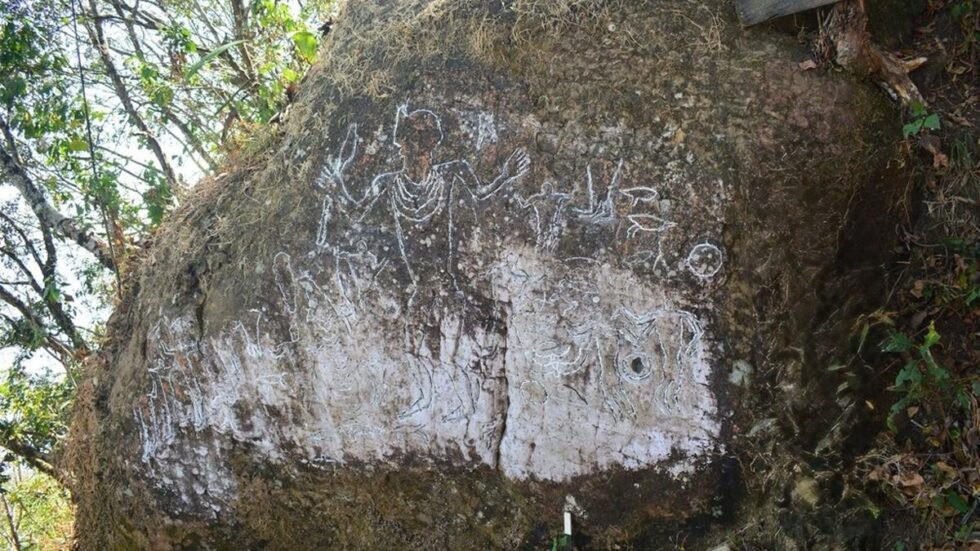
The Archaeological Survey of India (ASI) has announced the discovery of four centuries-old rock art sites in Mizoram, estimated to date between the 16th and 19th centuries. The sites were documented during a village-to-village survey conducted by a three-member ASI team across the Champhai, Khawzawl, Saitual, and Serchhip districts in February.
In Maite village, Saitual district, a rock cliff features a prominent human figure surrounded by smaller human figures, animals, gongs, a row of mithun heads, and some unidentified symbols, the ASI reported. The mithun (Bos frontalis) is a semi-domesticated bovine found in the region.
Carvings found at Lianpui in Champhai district include a prominent human figure, stacked rows of human figures, animals, fish, spears, dao (a type of machete), hornbills, and rectangular chambers, offering insights into the region’s past artistic expressions.
In Khawzawl district, findings at Tualte included etched mithun heads, human figures, grooved marks, and rectangular figurines on a vast rock surface. At Chhawrtu, also in Khawzawl, carvings comprised a unique combination of human figures, mithun heads, rows of human heads, a circular figurine with tendril-like lines, and a fish motif, all intricately carved.
“These discoveries highlighted the rich cultural heritage of Mizoram and the artistic expression of its ancient inhabitants,” the ASI stated, nearly two months after the survey concluded.
The team was led by Salam Shyam Singh, the ASI’s Aizawl-based assistant superintending archaeologist. He confirmed that a detailed report on the discoveries has been submitted to the ASI headquarters.
“Such surveys precede an excavation. Locals informed us these carvings have existed in the villages for ages, but they appeared to be from the 16th to the 19th centuries. We can be conclusive only after carbon dating of the samples,” Mr. Singh explained.
Lost civilisation
The newly discovered rock art sites, which have been proposed for protection, are located in a zone surrounding Vangchhia in Champhai district. In January 2016, the ASI had previously identified Vangchhia as containing evidence pointing towards a significant settlement, potentially a “lost civilisation” dating back possibly to the Neolithic Era, describing it as a “living history museum”.
The Vangchhia site, covering about 45 square kilometres and situated 260 kilometres from Aizawl, yielded pictographs etched on large stone slabs, menhirs (large standing stones), a necropolis (a large burial ground), and other relics. Particularly noteworthy were a structure identified as a water pavilion and numerous strategically drilled holes, ranging from less than one foot to one metre in diameter, found in sandstones across several hill slopes.
After more than two years of research, archaeologists developed theories behind the “seemingly simple science” of water harvesting techniques employed at Vangchhia, likely capable of sustaining local populations for at least a year. They noted how inhabitants appeared to have trapped rainwater flowing down slopes by utilising natural fissures and veins in the rocks, enhanced by the drilled holes. Researchers suggested this natural adaptation might have obviated the need for constructing large water tanks, despite the apparent capability to do so.
Among the theories proposed for the drilled holes were denying enemies easy access to water sources, luring animals for hunting, and possible ritualistic practices. However, all theories converged on the primary function of efficient water harvesting.







